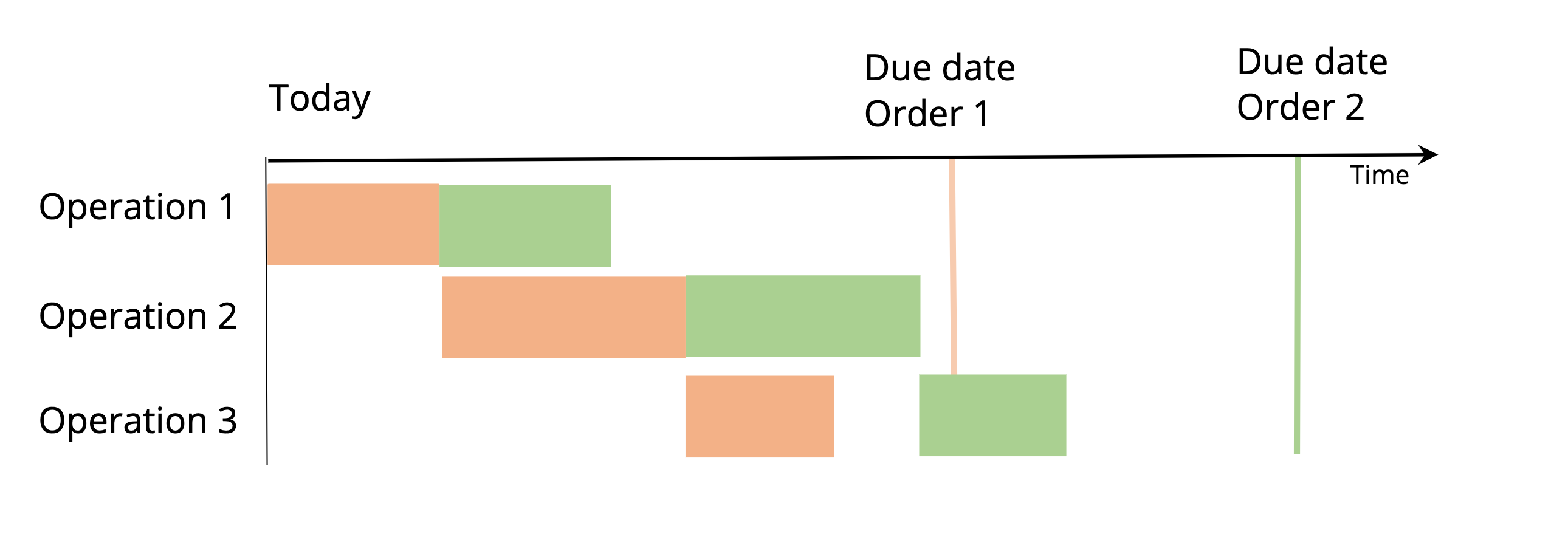Backward or forward scheduling
What are backward and forward scheduling techniques? How do you choose one over the other and what is the impact on your daily production schedule? Which one works better? In this article, we compare both backward and forward scheduling and attempt to answer these questions.
Forward scheduling
Forward scheduling starts a new task on a workstation as soon as the previous one is finished. The resulting plan will finish all tasks as early as possible, potentially finishing jobs early and creating extra inventory.
Subassemblies going into a final assembly are completed at different times, resulting in extra work in progress. Resources are utilized as much as possible.
This mode is only working for short-term scheduling. You don’t want to start production now for a sales forecast due in 6 months.

Backward scheduling
Backward scheduling works from the due date of the demands and plans for a just-in-time completion of the order. This scheduling method minimizes the work in progress and inventory.
The plan of components going into an assembly are synchronized. Resources are utilized when they are needed, leaving gaps in the schedule on non-bottleneck resources.
This mode works well for short-term scheduling as well as mid to long-term planning

Which one should I choose?
It is widely recognized that the backward scheduling approach results in a superior plan. And yet, a lot of companies fail to plan in this way…
Why? An important output of the plan is a “what-to-do-next list” for the machines and operators. The backward scheduling technique leaves gaps in the schedule of non-bottleneck resources, which makes planners uncomfortable: “The resource is available, why leave it idle?”
As a result, companies without a planning tool that allows them to understand and interpret the plan correctly often remain very focused on the forward scheduling technique.
FrePPLe’s planning algorithm
FrePPLe planning algorithm combines both forward and backward scheduling techniques.
We start out with a backward plan for each demand starting from its due date. In this backward planning mode, we include appropriate safety times and safety quantities. Using these, we assure that we can still ship customer orders on time, even when things don’t proceed exactly as planned.
When the backward scheduling search doesn’t find material and capacity to deliver a customer order on time, we switch to a forward planning mode where we plan the order as soon as possible with a minimal delivery delay.
In a frePPLe plan, non-bottleneck resources may appear underutilized in the short term. This is a perfectly normal situation for non-bottleneck resources (see theory of constraints). It is then up to the planner’s judgment to choose whether to leave the resource idle as planned or to pull forward an operation which the algorithm planned only later.